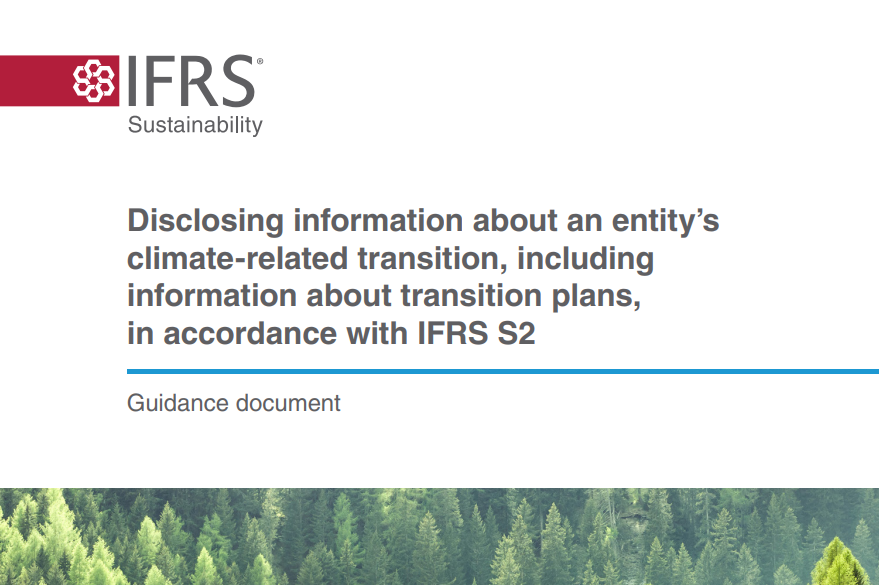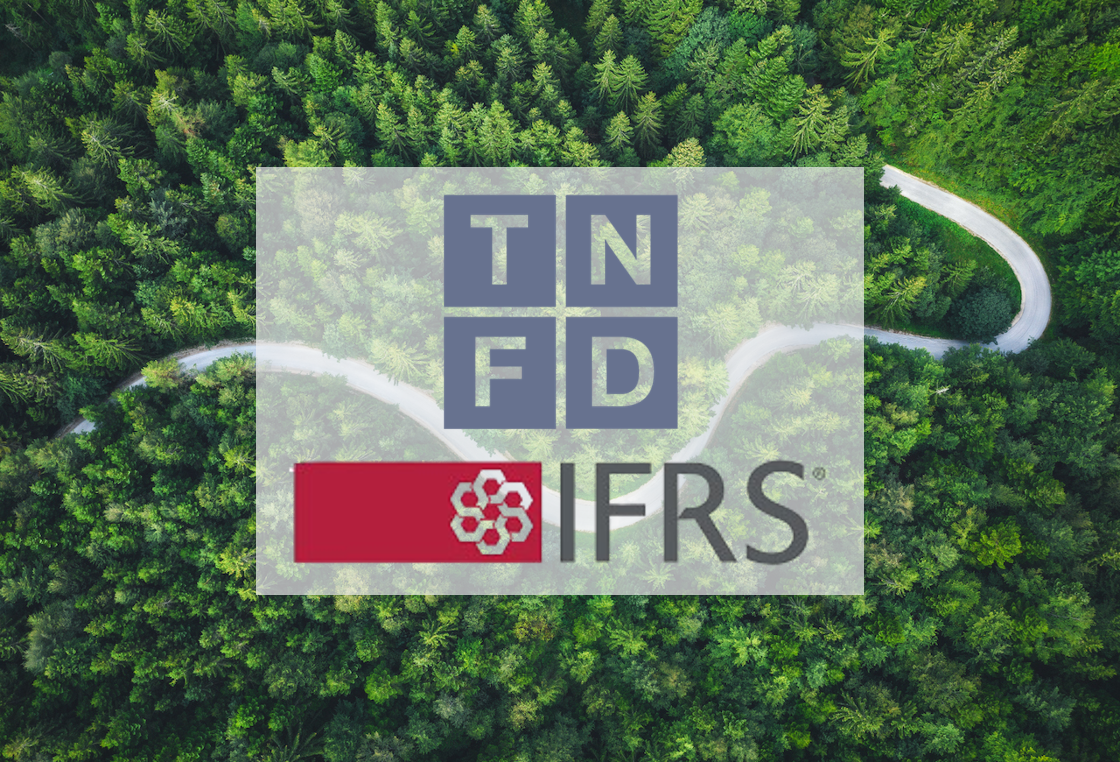Understanding the New IFRS Guidance on Transition Plan Disclosures
The IFRS Foundation has issued a guidance document to assist entities in applying IFRS S2 for climate-related disclosures. The document builds on materials from the Transition Plan Taskforce and is designed to support clear reporting on how entities address climate-related risks and opportunities.

The IFRS Foundation has released new guidance to support entities in disclosing climate-related transition information under IFRS S2, enabling them to provide high-quality information about their transition towards a lower-carbon and/or climate-resilient economy in alignment with the ISSB global baseline of sustainability-related financial disclosures.
Purpose and Scope of the Guidance
The guidance supports the implementation of IFRS S2 by assisting entities in providing high-quality disclosures about their climate-related transition, including any transition plans they have in place. While IFRS S2 does not require entities to develop or publish a transition plan, it does require the disclosure of material information about "climate-related risks and opportunities that could reasonably be expected to affect the entity’s cash flows, its access to finance or cost of capital over the short, medium or long term."
The document builds on materials developed by the Transition Plan Taskforce (TPT), adjusted for global applicability and focused on maintaining alignment with the ISSB Standards.
What Constitutes a Climate-Related Transition Plan
A climate-related transition plan is described as an aspect of an entity’s overall strategy that outlines its targets, actions, or resources for transitioning towards a lower-carbon and/or climate-resilient economy. Transition planning is described as a strategic process through which an entity sets its transition-related goals and outlines actions for moving towards a lower-carbon and/or climate-resilient economy, while IFRS S2 does not define transition planning or prescribe how an entity should manage its business, policies, or processes.
The guidance clarifies that entities may be at different stages: they may not have developed a transition plan, may be in the process of developing one, or may already have a transition plan in place. Such disclosures under IFRS S2 should transparently communicate these differences in development stages without implying a requirement to have a transition plan.
Disclosure Requirements Under IFRS S2
Transition planning is part of an entity’s broader strategy-setting process. Under IFRS S2, the strategy requirements include disclosing information about an entity’s transition towards a lower-carbon and/or climate-resilient economy if it has set a strategic goal to do so. Entities should disclose the following:
- how the entity has responded to and plans to respond to climate-related risks and opportunities;
- how the entity’s business model is changing or is expected to change as part of its transition;
- what direct and indirect mitigation and adaptation efforts the entity is implementing or plans to implement;
- any transition plan the entity has in place, including key assumptions and dependencies;
- how the entity plans to achieve its climate-related targets, including any greenhouse gas targets;
- how the entity is resourcing or plans to resource its response to climate-related risks and opportunities; and
- what progress the entity has made against previously disclosed plans.
These disclosures help users of general-purpose financial reports understand the entity’s approach to managing climate-related risks and opportunities in accordance with IFRS S2.
Dependencies and Assumptions in Transition Plans
Where an entity has a transition plan, IFRS S2 requires disclosure of the key assumptions and dependencies that support its implementation. Dependencies may include workforce capabilities to implement operational changes, reliance on specific ecosystem services (such as water availability and hazard regulation), access to emissions removal technologies required to meet GHG targets, and essential resource availability.
Key assumptions may cover:
- policy and regulatory actions (for example, subsidies or incentives for climate actions);
- decarbonisation developments (such as grid decarbonisation or low-carbon inputs availability);
- macroeconomic and financial factors (including labour availability, borrowing costs, inflation, or interest rates);
- technological advancements and their costs;
- reliability and availability of necessary data;
- changes in client and consumer demand;
- projections of temperature changes over time;
- physical impacts of climate change, such as precipitation patterns, extreme weather, and water availability;
- and the effectiveness and potential limits of adaptation measures.
Transparent disclosure of these factors helps users assess the credibility of the transition plan and the conditions it relies upon.
Supporting Effective and Comparable Disclosures
The IFRS Foundation’s guidance does not amend IFRS S2 requirements but aids preparers in understanding and applying them effectively. It seeks to reduce fragmentation in transition plan disclosures, aligning practices globally while enabling entities to communicate their climate-related strategies clearly to stakeholders.
This guidance represents a continued step by the IFRS Foundation in supporting the implementation of ISSB Standards, enhancing transparency, and providing stakeholders with reliable information to assess climate-related financial risks and opportunities.



